
Safari Park Jr.
The product development of Safari Park Junior (for SmartGames)
Raf Peeters, January 2023
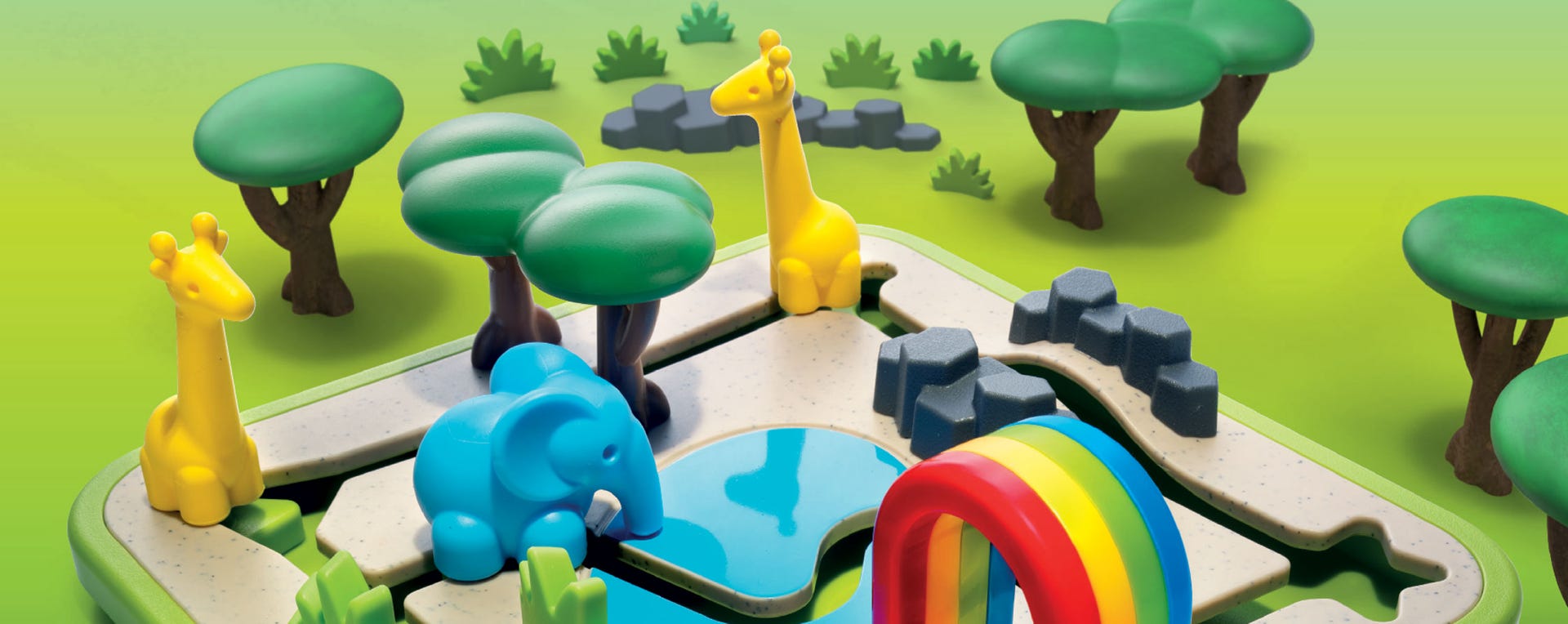
For quite some time, I wanted to design a SmartGame for preschoolers, featuring elephants and giraffes. Not only because these are iconic and beautiful animals, but also because they have distinct characteristics that could be incorporated into the game mechanics: the giraffes' long necks and the elephant's large body.
THE ELEPHANT IN THE ROOM
My favorite age group to design for are preschoolers, because the game mechanics can be kept very simple, as long as you add something surprising, something fascinating. In order to achieve this, it should incorporate elements that are easy to understand without being ordinary. And because it’s intended for young children, most of the game rules should therefor be enforced by the game board and the puzzle pieces.
Safari Park Junior is basically three games in one:
1) It is a basic shape sorter, where each animal has a unique shape on the bottom and can only fit into specific "holes" on the game board that match that shape.
2) Once an animal is in the game board, it becomes a track tracer or path finder game. Children exercise their fine motor skills and hand-eye coordination as they move the animals along the designated paths. Sometimes they can use one hand, sometimes they will need both hands, for example when they move an animal underneath the rainbow or trees. However, not all movements are possible as the shape and size of the animals limits their movement:
• Both giraffes are too tall to fit underneath the rainbow or trees.
• The elephant is too thick to fit in-between the grass or to climb over the rocky hill
• The lion won’t turn towards the center of the game board where the water is
Even without using challenges, this game is already interesting for young kids as they will create their own little stories and adventures while they move the animals around the board as they see fit. Removing the animals afterwards from the game board also becomes a challenge, because once an animal is inserted, it’s not so obvious anymore to see which shape is at the bottom and which corner is the right one to get out.
3) When children are old enough to understand the concept of a challenge and solution, they can try to solve the challenges which are printed on cards. For this young age we always prefer cards instead of a booklet for two reasons. First of all, thicker cards are more durable. Young children are often not very careful when it comes to booklets. Secondly, cards have the advantage that you can separate them. These type of games are often played together with a (grand)parent or older sibling. They can show one single card so that the child will focus only on that challenge. A booklet would provide too much distraction, because young children want to find out immediately what else there is to see.
Originally I wanted to make the game board of plywood. Unfortunately this would have made the game too expensive. The final product is a combination of ABS and TPR parts. Therefor the game didn’t need to stay flat anymore, so we added a little hill on the rocky side of the game board.
In simple challenges you only need to move one animal to one of the four sides of the game board. You have a side with a tree, a rainbow, rocks and grass. Challenges only show what’s visible close to the animal, so you won’t see anything from the background. Challenges of the Junior or Expert level show more animals. Sometimes they overlap each other and in harder challenges they are often in different paths. For example the lion can be on top of the rocks with an elephant behind him who is actually in the path in the water.
The rainbow and tree have a similar function in the game, because they both block the movement of the giraffes. But the rainbow has a clear left and right side because of its colors. Therefor challenges with the rainbow are a bit easier than similar challenges with the trees. Originally the pond in the centre of the game board didn’t have a function, except filling up that space. But in the story telling it does get a function, because later we added a lion to the game that doesn’t like water. To block the movement of the lion in the direction of the water, we made the connector at the bottom of him wider.
This game combines so many elements that are interesting for young children. It has eye-hand coordination, motor skills, spatial insight and visual perception. But when played together with someone older, it’s also interesting to learn concepts like “in front”, “behind”, “left/right”, etc. It’s been tested at the old school of my boys (they are now way too old). And the teacher said it incorporates exactly all the things they use when they work with children of age 3 and 4.
Although it’s not necessary to remove all animals from the game board, you make it a lot harder if you don’t, because one animal will block the movement of another animal. In the Master level there are even a few challenges that are impossible to solve, if you don’t take away all animals before you start. Because in these challenges the four animals should be placed correctly on the game board and this only possible if you insert and move them in a specific order. So in these challenges you also need to plan your steps carefully.
As always, this game would not have been possible without the invaluable help of my colleague Leighton, who is in charge of 3D design and Hans who created the illustrations. I really love the simplicity of this game that at the same time offers so much variation and options to play and I hope children will love it too. This game will become available in Spring 2023.
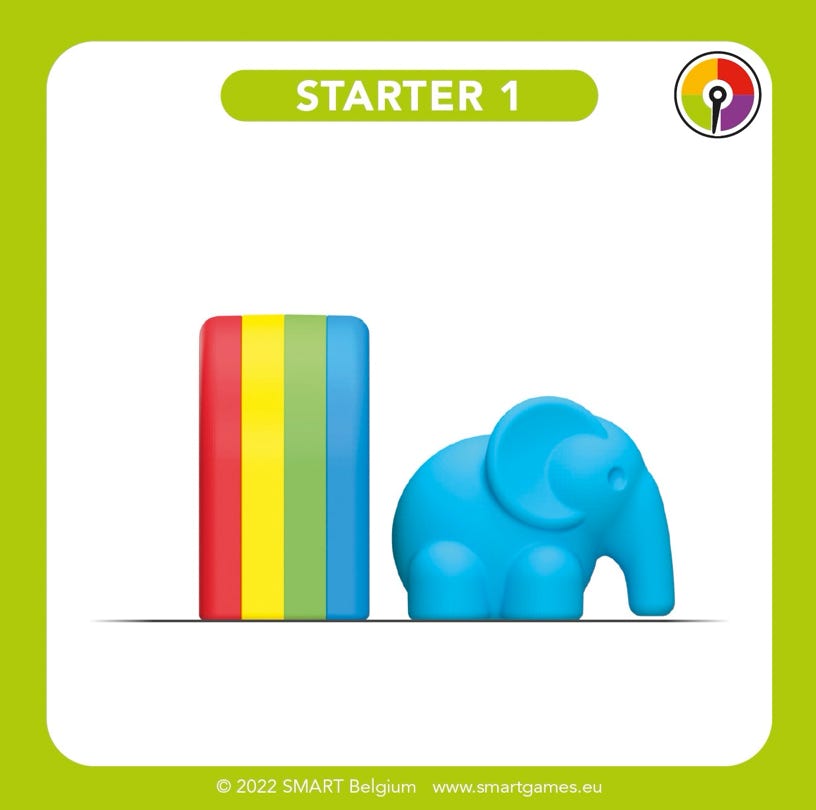
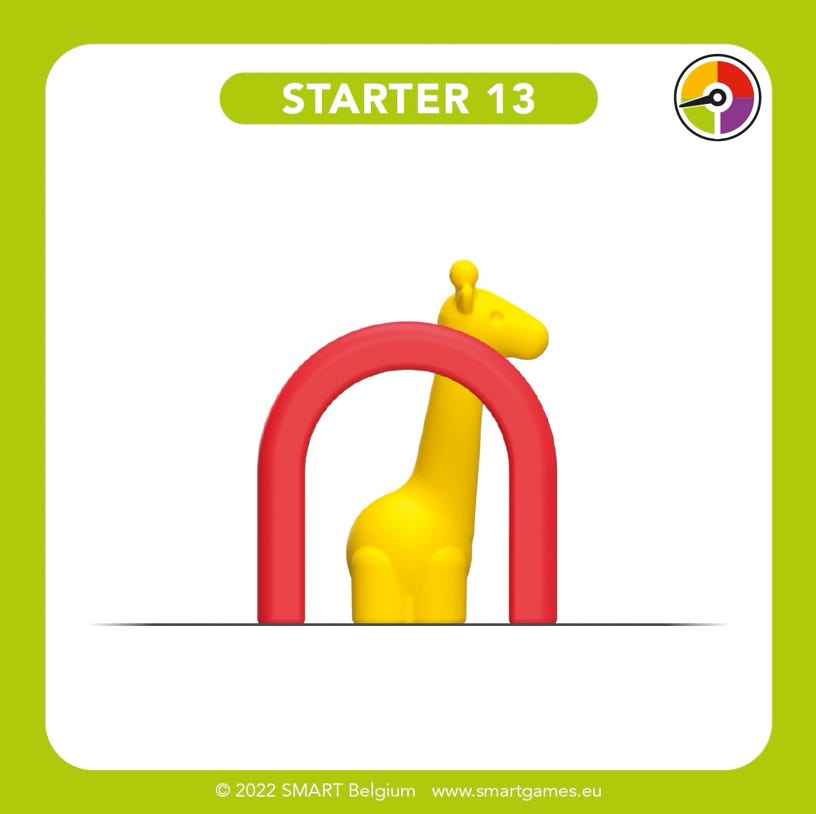
Examples of two STARTER challenges of Safari Park JR.
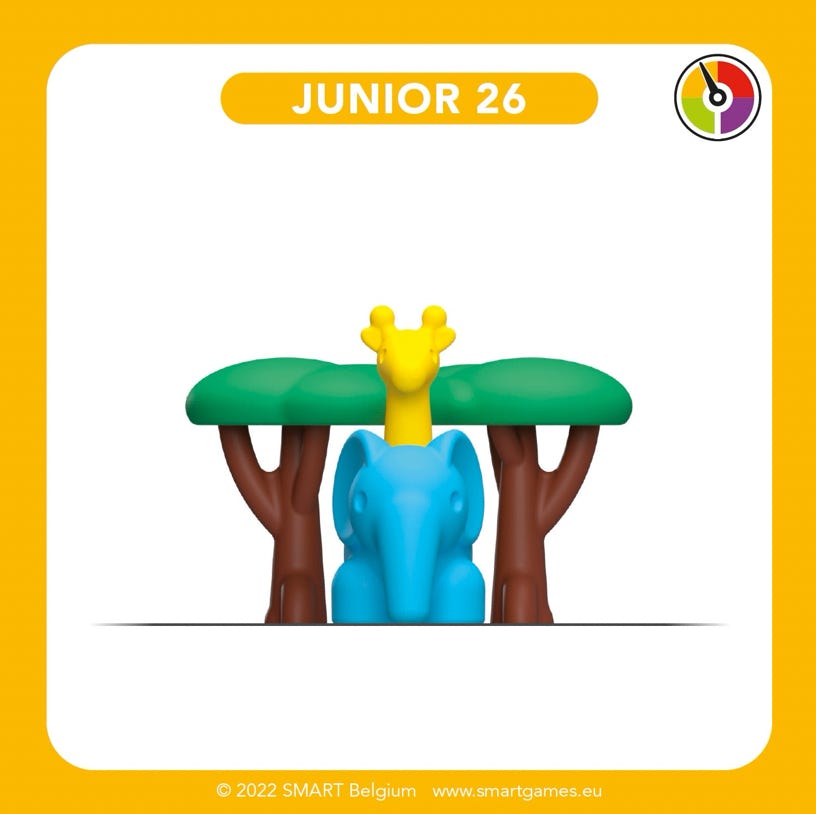
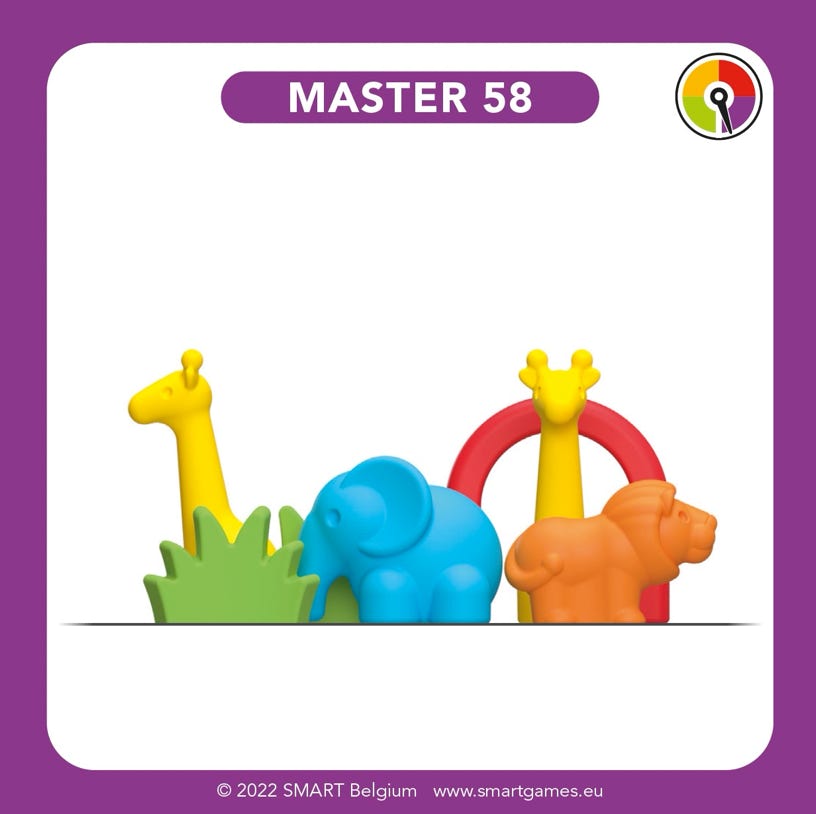
Example of a JUNIOR and MASTER challenge of Safari Park JR.
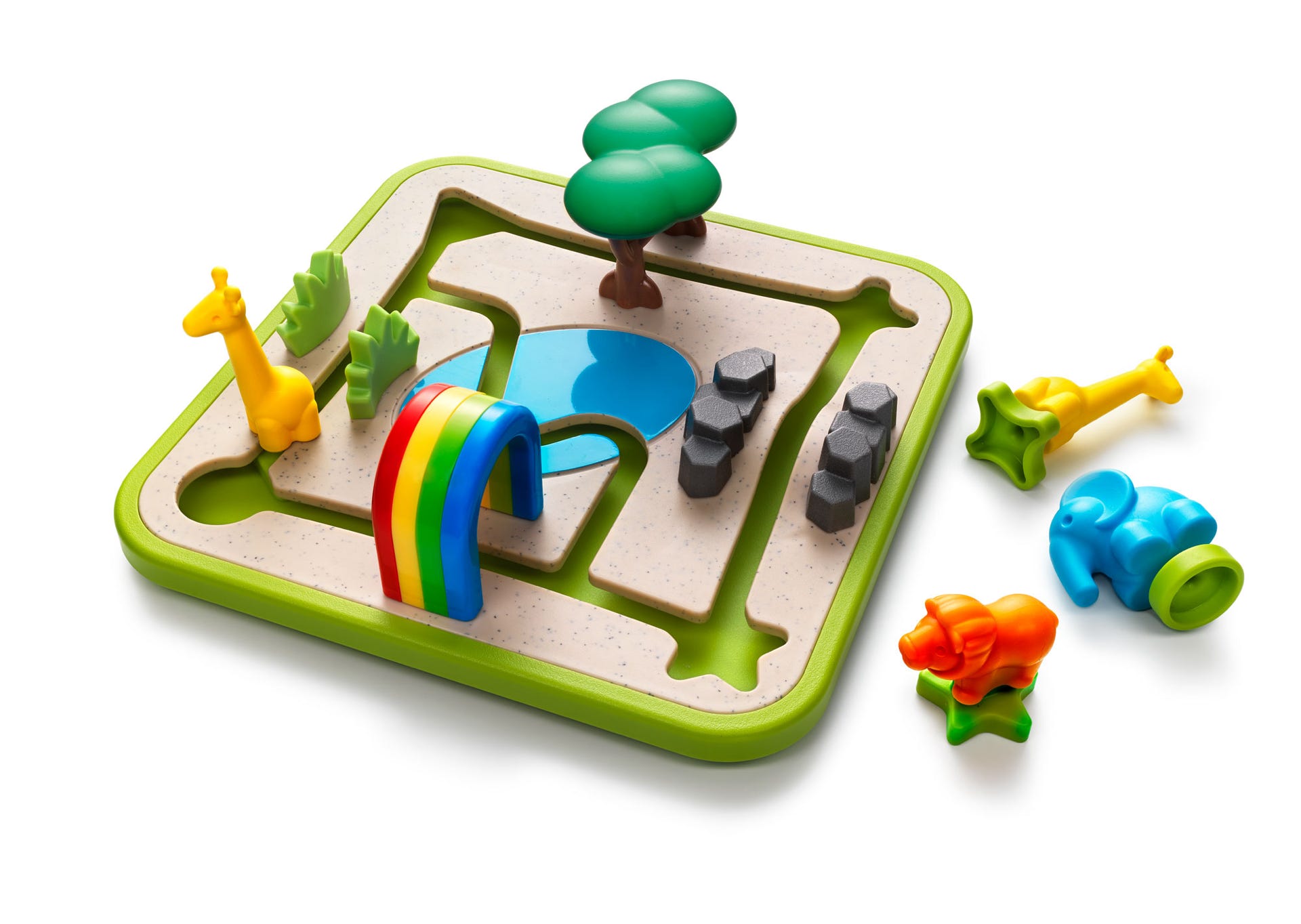
GAME RULES SAFARI PARK JUNIOR
BEFORE YOU START
Safari Park Jr. is both a toy and a puzzle game! Younger children can safely play with the figurines and use the toy as a shape sorter and/or path finder. The challenge cards and game rules below are intended for children of age 3 and up.
1) Choose a challenge and remove all animals from the game board. Challenges show a "snapshot" of one or more animals on a specific place.
2) Move the animals you need to the correct location on the game board:
A) Each animal must enter the game board from a single place: the corner that has an opening that corresponds with the shape at the bottom of the animal.
B) Because they are too tall, Giraffes cannot be moved underneath the trees or the rainbow.
C) The Elephant cannot walk through the grass or over the rocky hill (he is too wide to fit through these obstacles).
D) The Lion cannot walk through the water in the centre of the game board. So he will not make a turn to go that way.
3) You have found the solution when your result matches the challenge. A challenge only shows elements of the game board that are close to the animals that need to be used.
HINTS
Young children will need guidance when they start solving the challenges. Help them by asking questions such as:
- Which animals do you need for this challenge? Where do you think this animal needs to go?
- Which side of the rainbow do you see here? Is this animal in front or behind it?
Note you do not always need to remove the animals when you start a new challenge. However not removing the animals can make challenges more difficult or impossible to solve, as one animal can obstruct the movement of the others.
Website ©2023 Raf Peeters
Products and images: © Smart